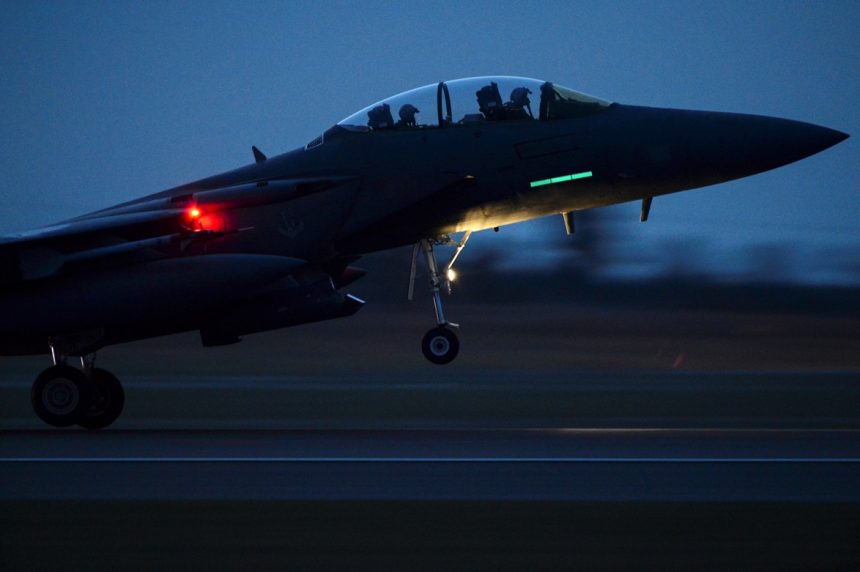A new laser incident in the skies over U.K.
As reported by several media outlets, in the night of Mar. 2, 2016, a laser beam was pointed at a U.S. Air Force F-15E Strike Eagle aircrew belonging to the 48th Fighter Wing as it made its approach to land at RAF Lakenheath.
A spokesman for RAF Lakenheath explained that, even though the F-15E aircrew has been momentarily disoriented, the fighter jet was able to land safely.
This incident is the last of a long series of similar events in the UK that involved both military and civil aircraft: as explained by BBC, between Jan. 2009 and Jun. 2015, more than 8,998 laser attacks across the country were reported to the UK Civil Aviation Authority.
Noteworthy the frequency of the laser attacks hasn’t diminished in 2016, as confirmed by another incident that involved last month a New York-bound Virgin Atlantic flight which was forced to return to Heathrow Airport after being struck by a laser beam, most likely from a hand-held laser pointer.
These devices, which can be purchased by everyone at low-cost on the Internet, are not illegal but can be very dangerous to aircrews: they can theoretically lead to the aircraft crash because of pilot’s temporary blindness and spatial disorientation caused by the shining light.
In an effort to stop laser attacks, in 2010 a law was passed in the UK. This regulation states that presumed offenders can be charged with “shining a light at an aircraft in flight so as to dazzle or distract the pilot” and, if found guilty, sent to prison.
Nevertheless, the constant danger posed by laser beams to planes has induced the British Airline Pilots Association to ask for a laser pointers ban in the U.K..
Image credit: U.S. Air Force









